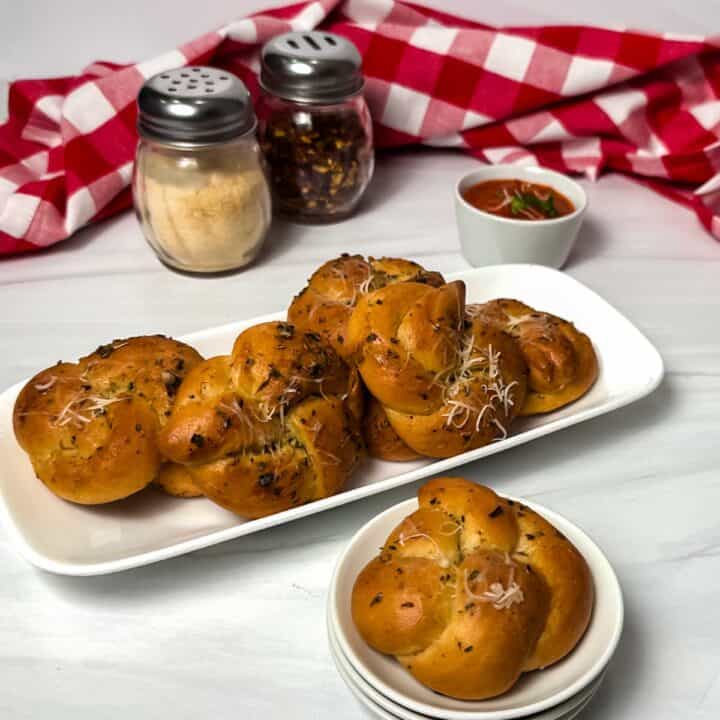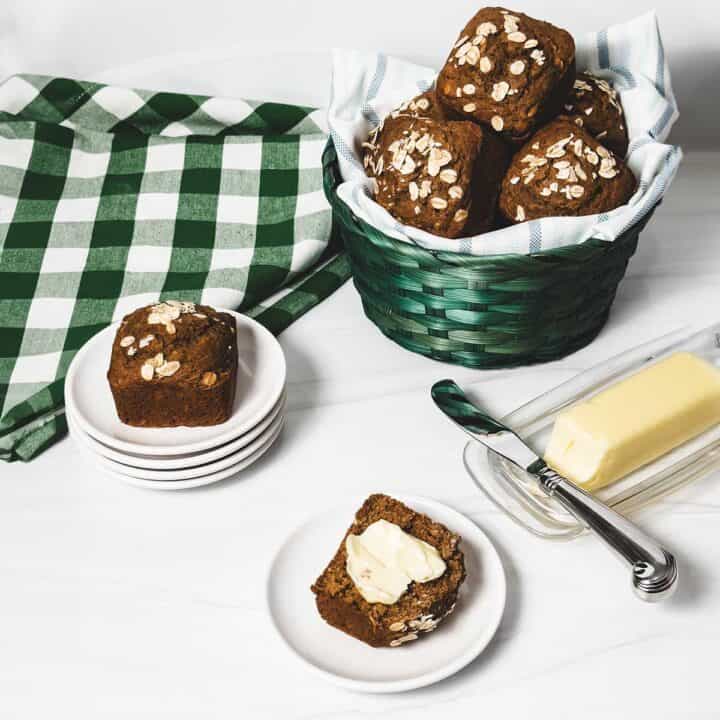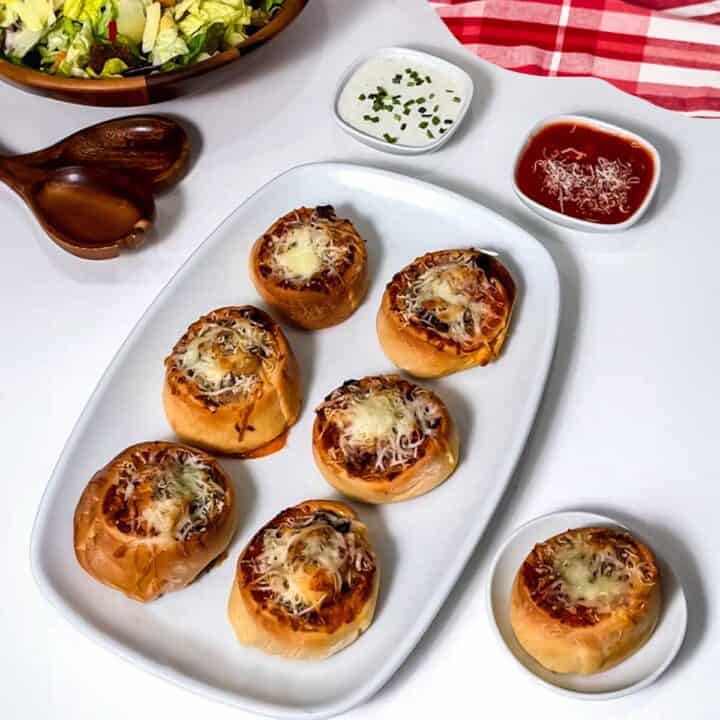French Bread Rolls have the perfect balance of simplicity and artisanal sophistication. With just a few simple ingredients and your bread machine, you can have fresh, homemade French bread rolls in no time. The rolls are light and fluffy on the inside, with a crispy crust on the outside. They’re perfect for dipping in soup, spreading with butter, or serving with your favorite sandwiches.
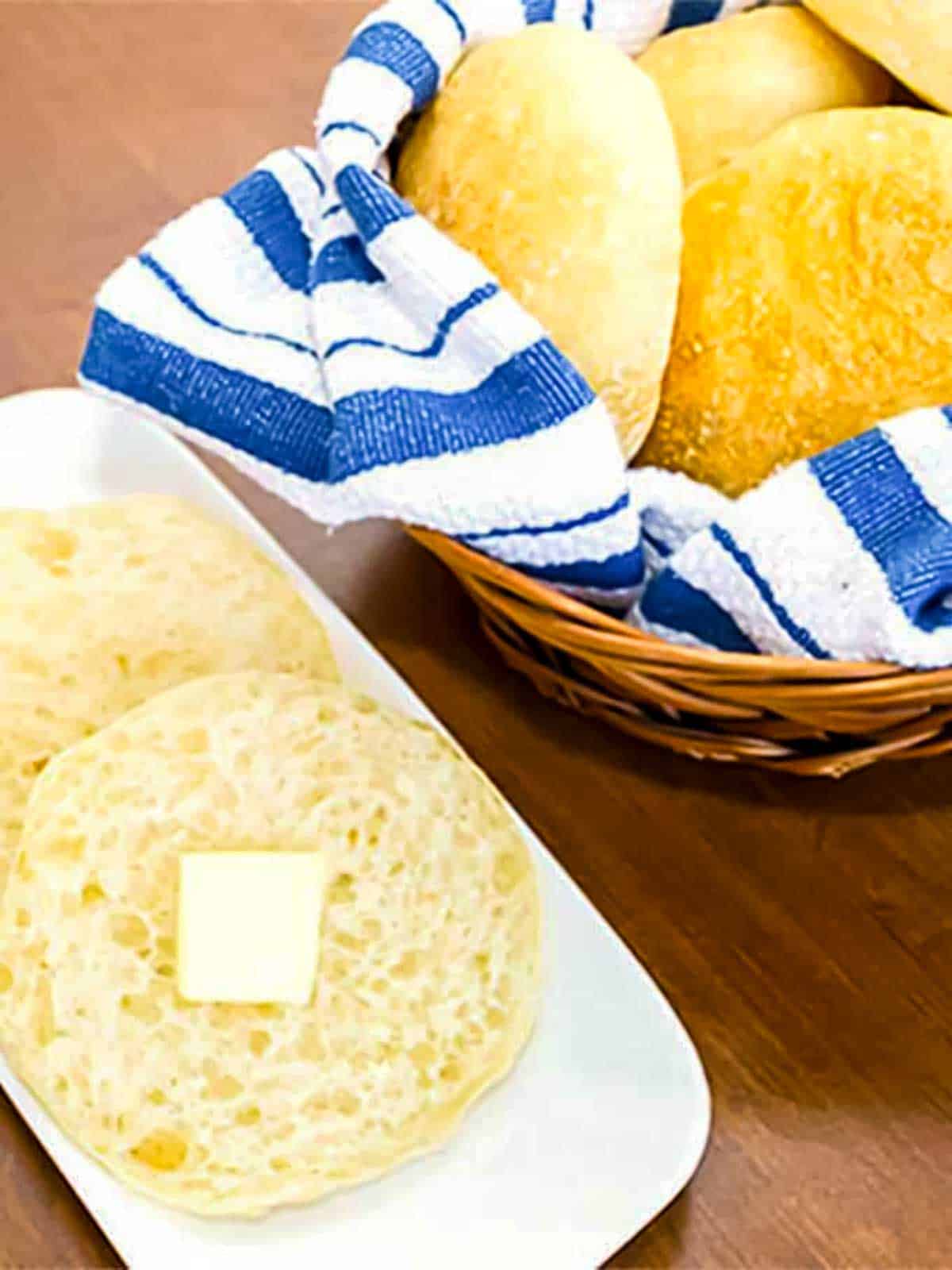
Jump to:
Why You’ll Love This Recipe
- Time-Saving: The bread machine does most of the work for you with this recipe. From kneading the dough to letting it rise, this hands-off approach saves you time and effort.
- Consistency: With a bread machine and weighing your ingredients, every batch of these delicious French Bread rolls comes out the same. No more worrying about the dough being over-kneaded or under-kneaded.
- Quality: With our fully tested ingredients and steps, your homemade French bread rolls will taste as good as those from a top-notch bakery. In addition, they will have a perfect texture every time – crunchy crust and soft, fluffy interior.
- Freshness: There’s nothing quite like the aroma and taste of freshly baked bread right out of your kitchen.
First – Make the Starter
I began by making a starter the night before. The starter has equal parts of bread flour, water, and a very small amount of yeast.
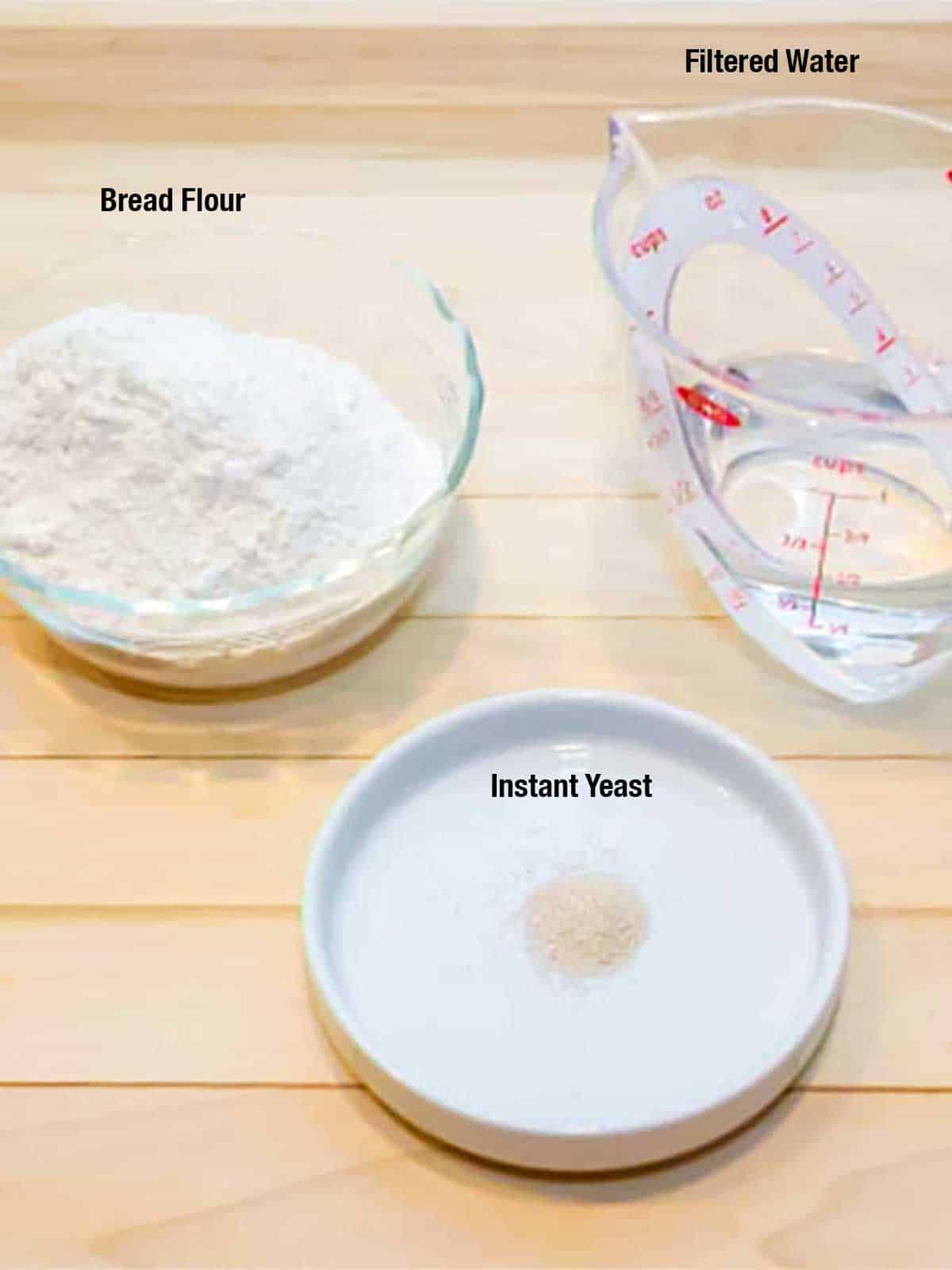
To make the starter, I mixed the bread flour, water, and yeast in a small bowl until combined.
Then, I dumped it into the pan of the bread machine and closed the lid for the overnight “activity.”
At first, I was concerned that I should cover the pan with plastic wrap since the top of the bread machine is vented. As it turns out, this is not necessary.
The next morning, the starter was bubbly and ready to use. I’m constantly amazed at what the starter looks like, given the small amount of yeast.
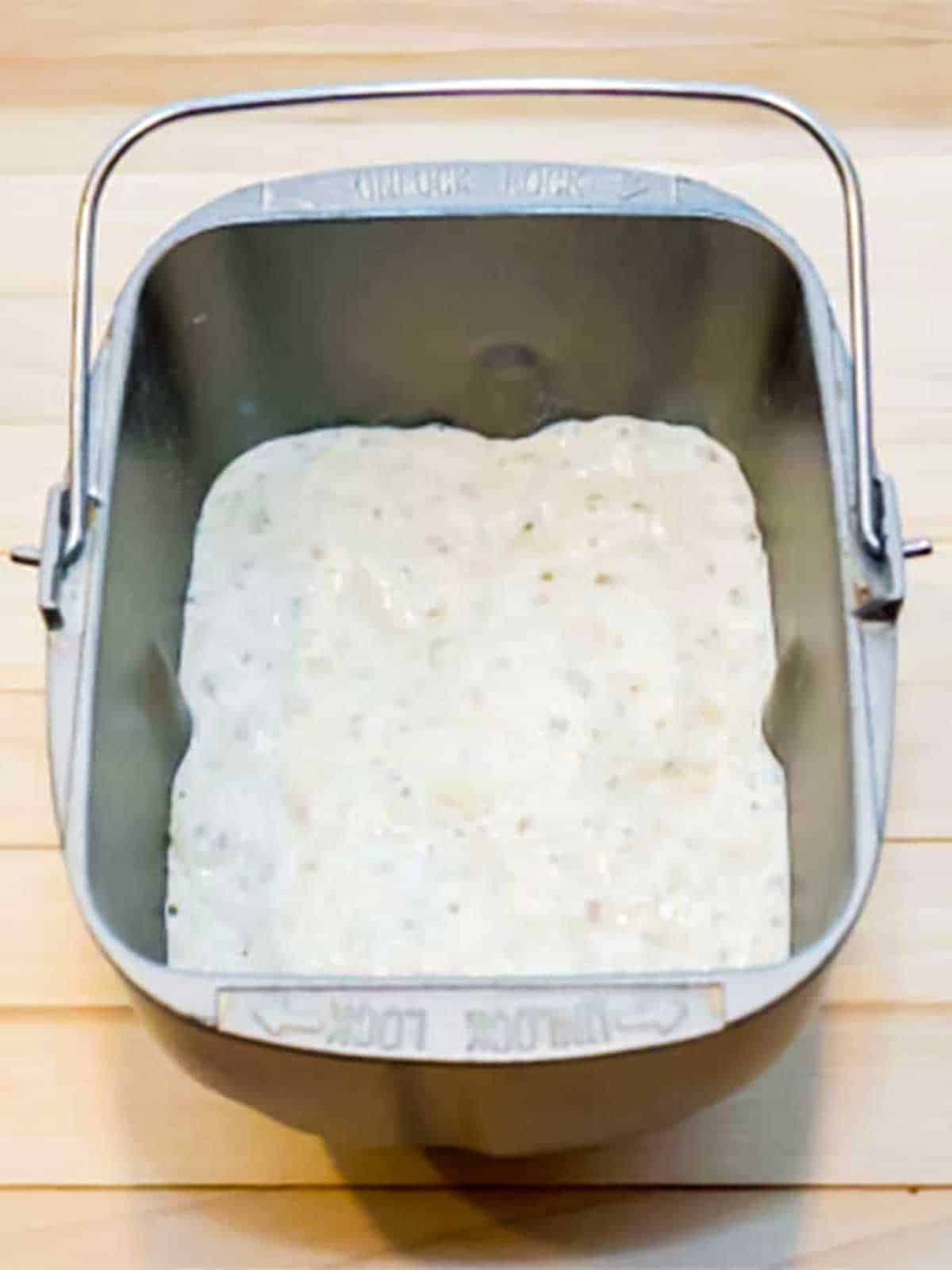
Second – Making the Dough for the French Bread Rolls
I used the following ingredients for the actual rolls: The starter, Kosher salt, filtered water, bread flour, and some additional instant yeast.
I added these to the pan of the bread machine in the order listed. Then, I set set the bread machine to the dough cycle.
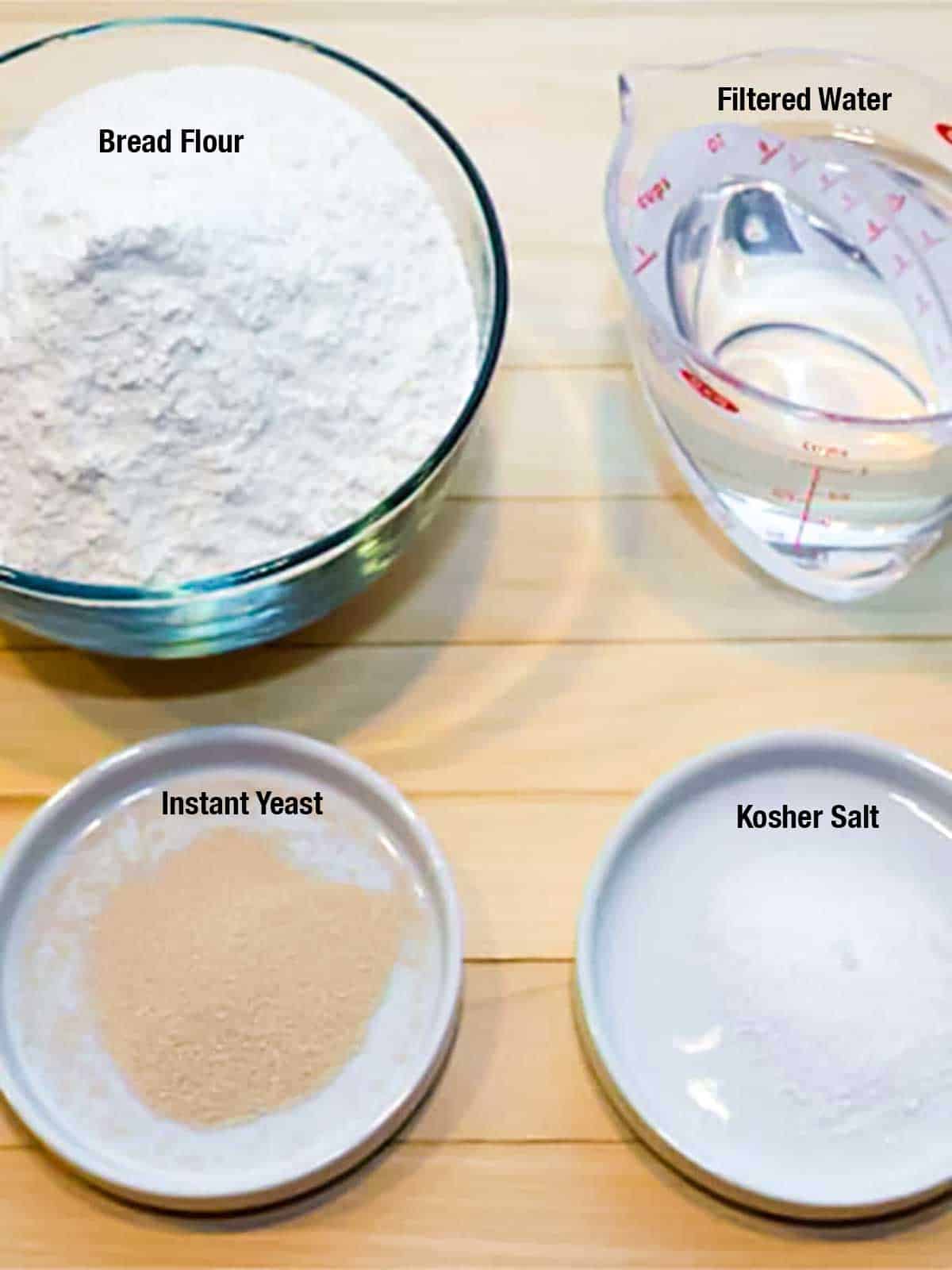
Third – Forming the French Bread Rolls
After the dough cycle finished, I removed the dough to a floured piece of parchment paper.
I used a pizza cutter to cut the dough into 2 to 2.25-ounce pieces. Then, I stretched each piece several times and formed it into a ball.
Next, I placed each ball on a parchment-lined baking sheet. Finally, I used my floured fingertips to flatten the balls. I do this because I prefer the rolls when they’re a bit more spread out.
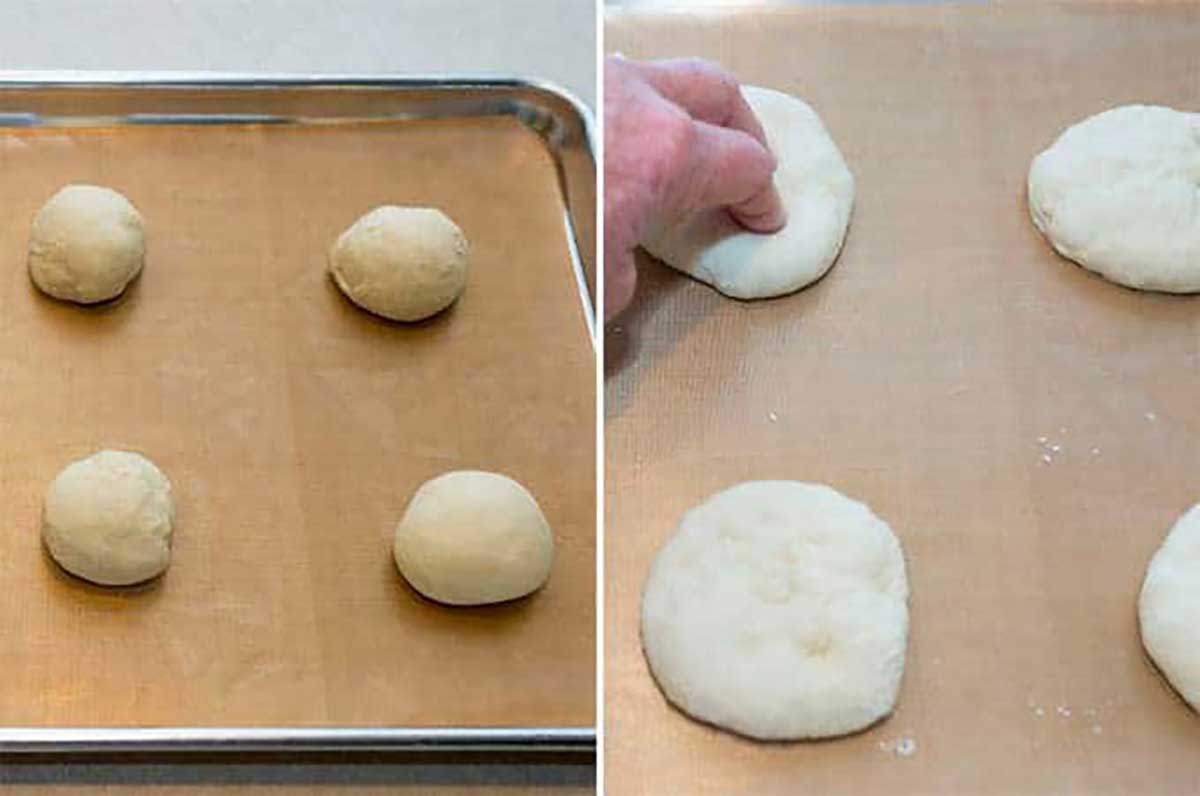
While experimenting, I discovered that the results were significantly better if I covered the sheet pan with another one before letting the rolls rise.
However, keeping the top baking sheet aligned with the bottom was sometimes tricky.
To solve this problem, I used a pan extender which Susan got me several Christmases ago. The additional baking sheet fit perfectly on top of the pan extender.
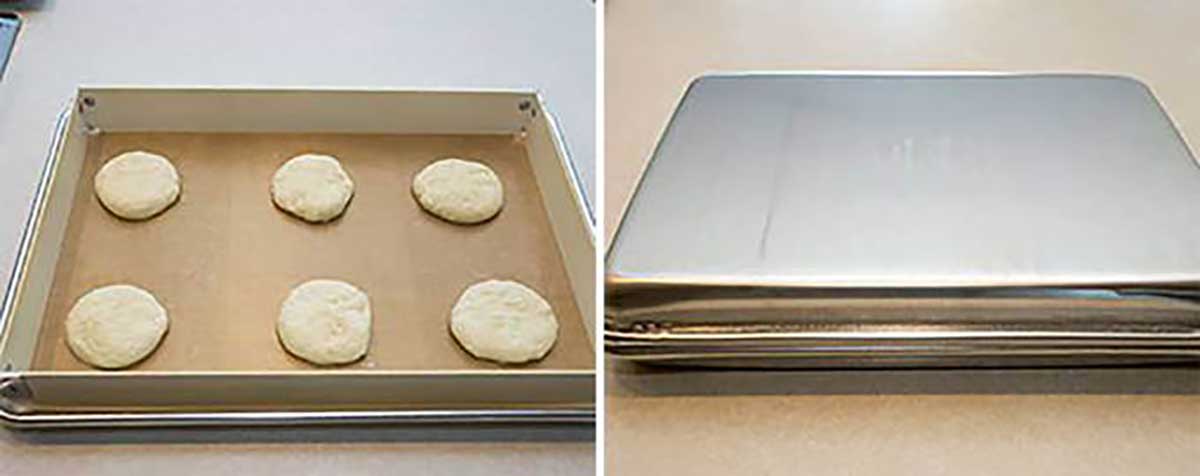
Following Julia Child’s advice, I use my electric oven, which has been turned on for 1 minute and 45 seconds, to create a warm environment in which the rolls can rise.
Because the rolls don’t contain that much yeast, they took several hours to reach the proper size.
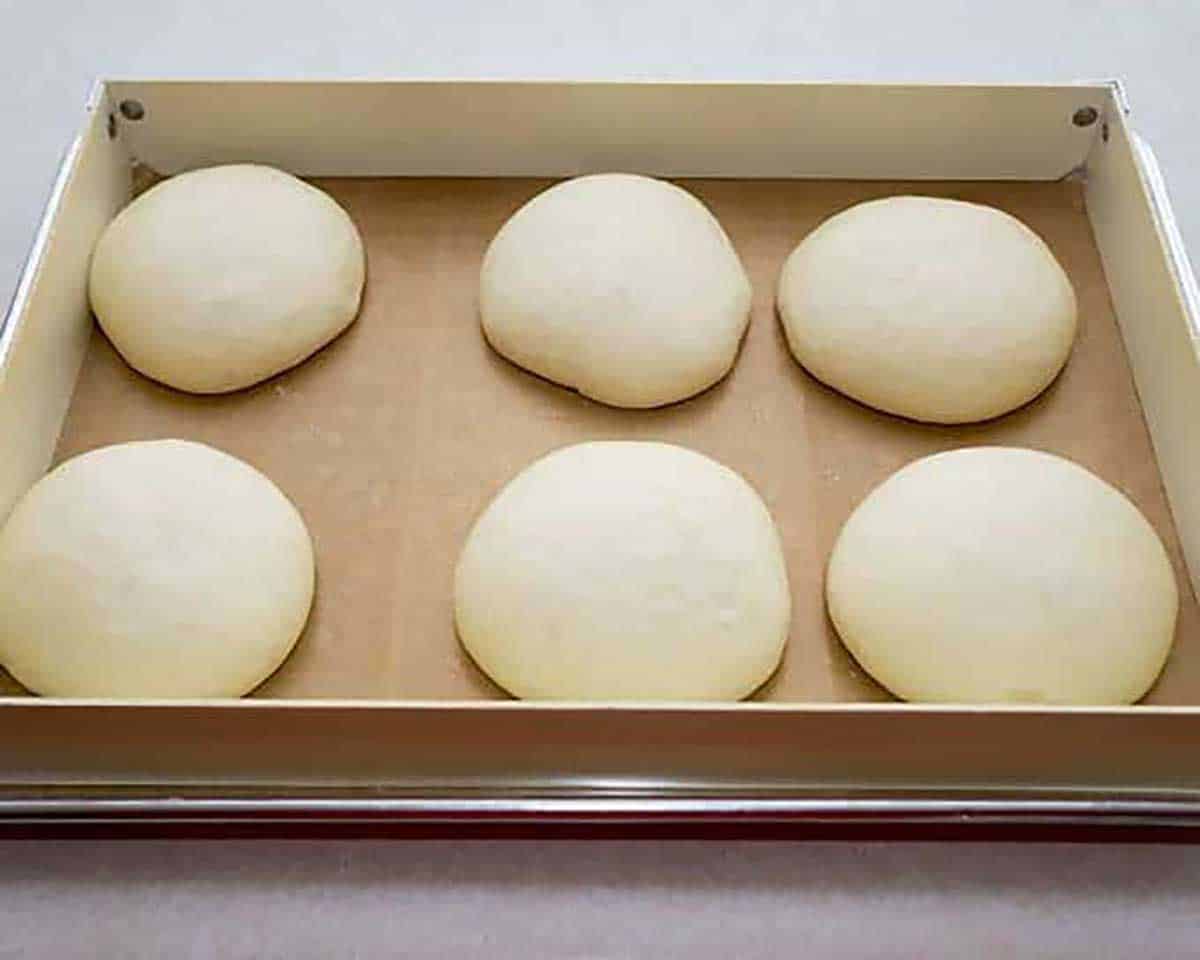
Once the rolls had reached the proper size, I removed the top baking sheet and the insert. I baked the rolls for 20 minutes in a preheated 400°F oven.
These delicious rolls were ready to serve once they had cooled on a wire rack. (Go here to see how to fold a regular kitchen towel for a basket insert.) Yum!
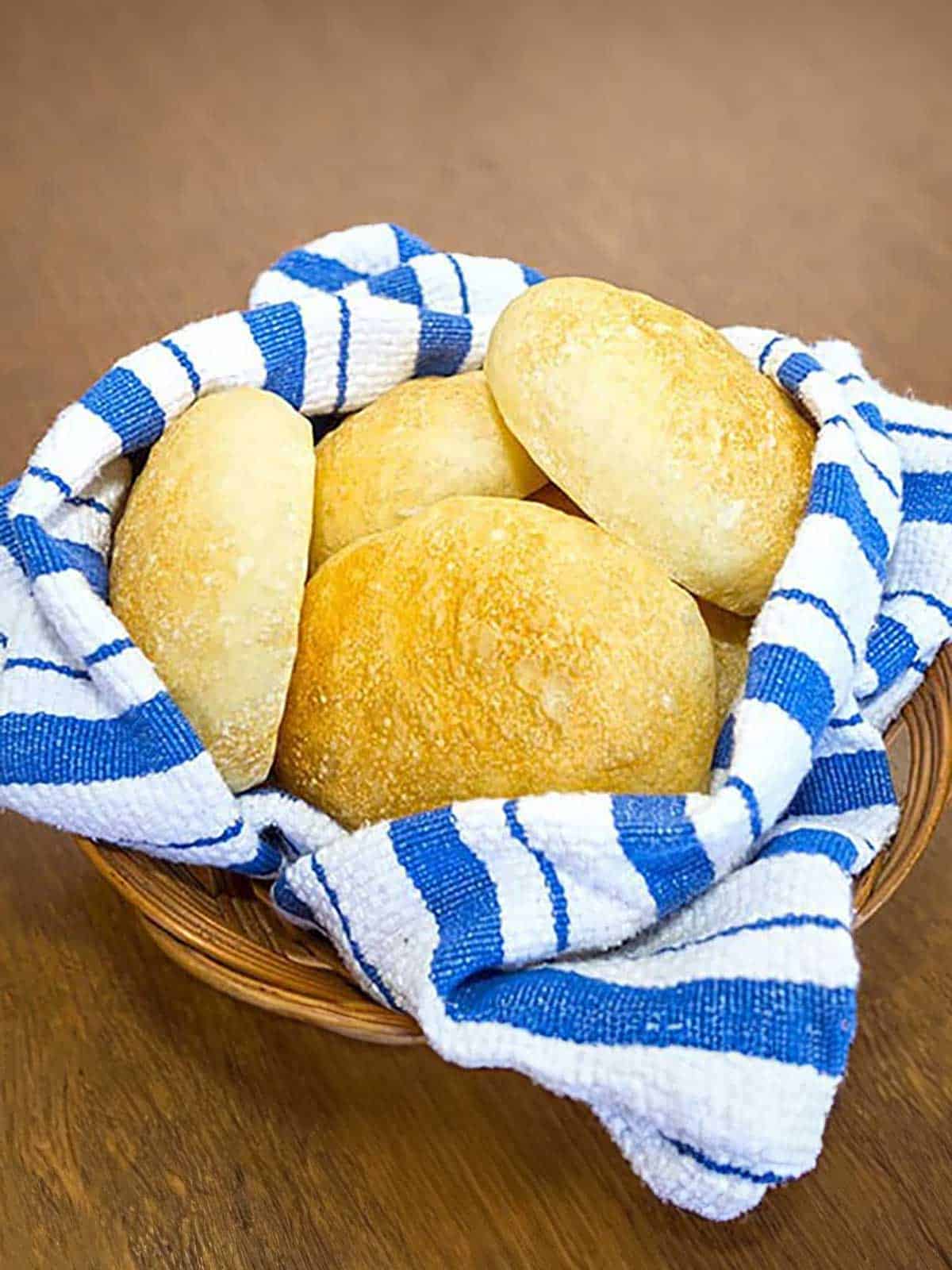
Frequently Asked Questions
The primary function of a bread starter is to act as a natural leavening agent. The starter contains yeast and lactic acid bacteria. As these microorganisms feed on the sugars in the flour, they produce carbon dioxide gas, which causes the dough to rise. Another function of the starter is to add flavor to the rolls. Finally, a starter contributes to the development of a more open crumb structure and a thicker, more artisanal crust.
If you use active dry yeast, you will need to rehydrate it before adding it to the other ingredients. Instant yeast can be added directly to the dry ingredients.
Bread flour has a higher protein content than all-purpose flour, which will give your rolls a better texture.
You can freeze French bread rolls. Once they are cool, wrap them tightly in plastic wrap and then place them in a Ziploc freezer bag. They will keep for up to 3 months in the freezer.
Recipe Tips and Tricks
- The secret to producing consistent results when making this recipe, or any bread recipe for that matter, is to weigh the ingredients. Traditional ways of measuring ingredients can produce different quantities, which can produce inferior rolls.
- If you don’t have a kitchen scale, do yourself a favor and purchase one. They are not expensive. In fact, my kitchen scale cost less than $10.00.
- When making bread, use filtered water. The reason is that tap water contains chlorine. Chlorine can retard the growth of yeast.
If you’re looking for some different rolls, try my Honey Wheat Rolls or Oat Rolls. Both are delicious.
I hope you liked this recipe for French Bread Rolls as much as I do. If so, please consider rating it and leaving a comment. Also, if you’d like to receive notifications of new posts by email, enter your email address in the Subscribe box.
Thank you so much for visiting Pudge Factor. I hope you’ll come back!
Recipe
Want to Save This Recipe?
Enter your email & I’ll send it to your inbox. Plus, enjoy weekly doses of culinary inspiration as a bonus!
By submitting this form, you consent to receive emails from Pudge Factor.
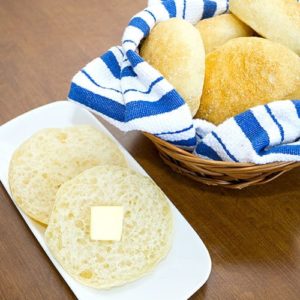
French Bread Rolls (Bread Machine)
Ingredients
For the Starter:
- ¾ cup plus 1 Tablespoon (4-ounces) bread flour
- ½ cup (4-ounces) filtered water
- ⅛ teaspoon bread machine yeast
For the Rolls:
- All of the starter
- 1 cup (8-ounces) filtered water
- 1-½ teaspoons Kosher salt
- 3 cups (15-ounces) bread flour
- 1 teaspoon bread machine yeast
Instructions
Starter
- Combine all ingredients in a small bowl; stir until combined. Cover with plastic wrap; let sit at room temperature for 14 to 18 hours.
Rolls
- Add the starter, water, salt, bread flour, and yeast to the pan of the bread machine. Program the machine for the dough cycle, and press start. When the dough cycle has finished, transfer the dough to a floured surface. Using either a pizza cutter or a dough scraper, cut the dough into 2 to 2.25-ounce pieces. Form each piece into a ball and place it on a parchment-lined baking sheet. Using floured fingertips, flatten each piece until it is about ½ inch thick. Allow to rise, covered with a baking sheet, in a warm place until tripled in size, about 3 hours. (See Tip 1)
- Preheat oven to 400°F. Bake 20 minutes, or until golden brown. Remove from oven; transfer to wire rack to cool.
- Yield 15 french bread rolls.
Tips/Notes
- To create the perfect environment for rising, turn on the electric oven for 1 minute and 45 seconds. Then, turn the oven off.


